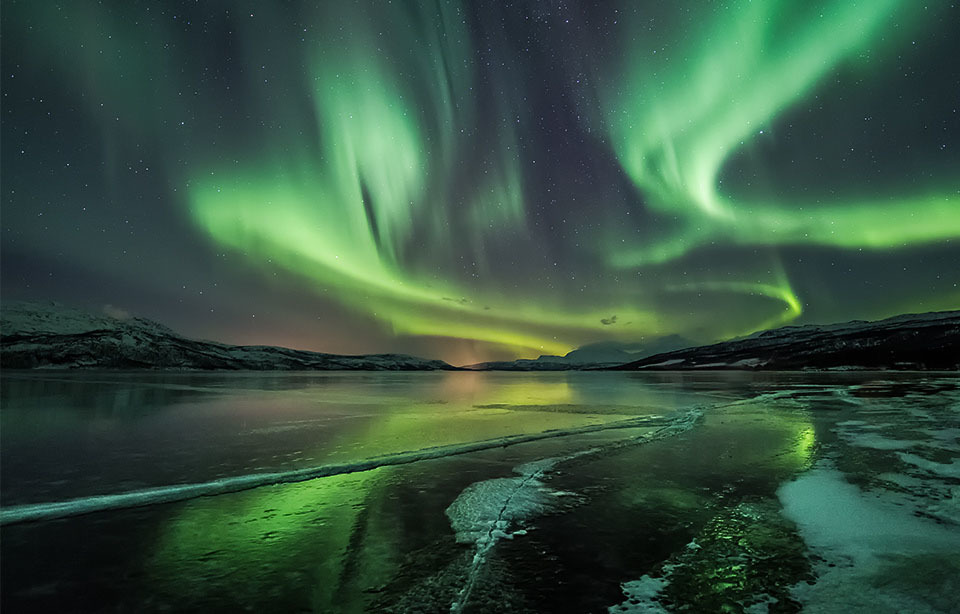Beautiful Northern Lights!
Electricity and Magnetism
Level
1
The Northern lights are a beautiful display of colored light in the sky. What causes them?

Artificial light bulbs and lasers
Ionization of Earth's atmosphere by charged particles captured (mainly) from the Sun
The Earth's magnetic field interacting with its electric field
The collisions of clouds
This section requires Javascript.
You are seeing this because something didn't load right. We suggest you, (a) try
refreshing the page, (b) enabling javascript if it is disabled on your browser and,
finally, (c)
loading the
non-javascript version of this page
. We're sorry about the hassle.
Northern lights are a naturally occurring phenomenon. The bright dancing lights are actually collisions between electrically charged particles from the sun that enter the earth's atmosphere. The lights are seen above the magnetic poles of the northern and southern hemispheres. They are known as 'Aurora Borealis' in the north and 'Aurora Australis' in the south.
Auroral displays appear in many colors, although pale green and pink are the most common. Shades of red, yellow, green, blue, and violet have been reported. The lights appear in many forms from patches or scattered clouds of light to streamers, arcs, rippling curtains or shooting rays that light up the sky with an eerie glow.
Now, let’s see what causes the Northern lights? The Northern Lights are actually the result of collisions between gaseous particles in the Earth's atmosphere with charged particles released from the sun's atmosphere. Variations in color are due to the type of gas particles that are colliding. The most common auroral color, a pale yellowish-green, is produced by oxygen molecules located about 60 miles above the earth. Rare, all-red auroras are produced by high-altitude oxygen, at heights of up to 200 miles. Nitrogen produces blue or purplish-red aurora.
Electrons and protons from the sun are blown towards the earth on the 'solar wind'. The temperature above the surface of the sun is millions of degrees Celsius. At this temperature, collisions between gas molecules are frequent and explosive. Free electrons and protons are thrown from the sun's atmosphere by the rotation of the sun and escape through holes in the magnetic field. Blown towards the earth by the solar wind, the charged particles are largely deflected by the earth's magnetic field. However, the earth's magnetic field is weaker at either pole and, therefore, some particles enter the earth's atmosphere and collide with gas particles. These collisions emit light that we perceive as the dancing lights of the north (and the south).
The lights of the Aurora generally extend from 80 kilometers (50 miles) to as high as 640 kilometers (400 miles) above the earth's surface.